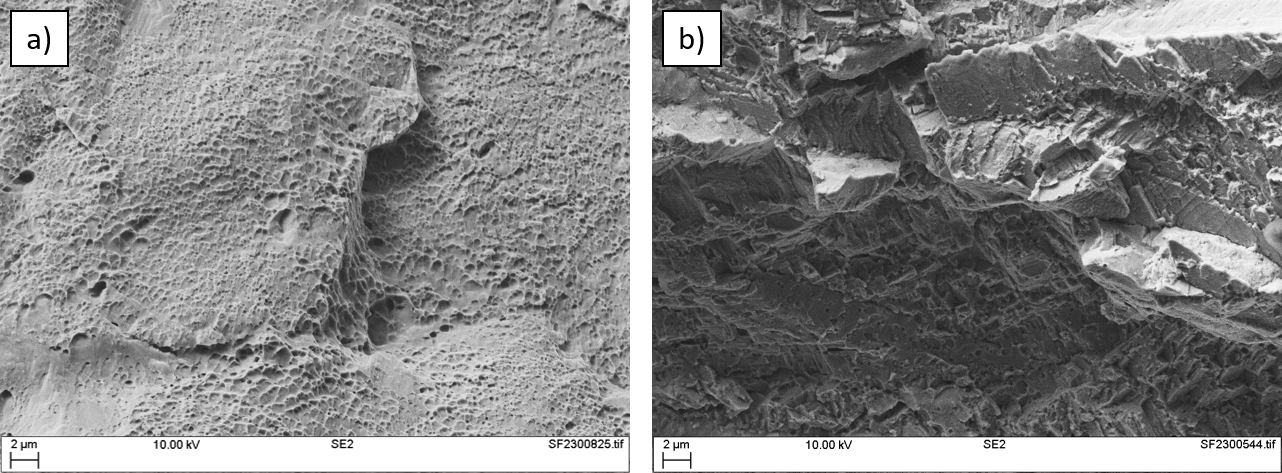Hydrogen Embrittlement Susceptibility of Additively-Manufactured 316L and Alloy 718
TWI Industrial Member Report 1186-2024 [pdf / 16,174KB]
By Dorothy Winful
PhD, MEng (Hons), CEng, I/EWE
Industrial Need
Metallic materials, including corrosion resistant alloys (CRAs) can be prone to hydrogen embrittlement (HE), when a susceptible microstructure is subjected to a sufficiently high combination of hydrogen and tensile stress. Commercial exploitation of additively-manufactured (AM) materials is increasing to produce complex components for both emerging technologies and, also, for existing applications where HE is a concern, such as subsea service in the oil and gas sector. Whilst there is a large body of work detailing the performance of wrought alloys in hydrogen, limited data are available for AM materials and components which present a host of new challenges to a historically multifaceted subject including: uniquely complex microstructures, inherent residual stresses, anisotropic properties and surface finishes.
The main objective of the workscope was to evaluate the resistance to HE of 316L stainless steel and Alloy 718 produced as AM builds that were produced at TWI using the laser-powder bed fusion (L-PBF) process.
Key Findings
- The L-PBF 316L builds had a slightly improved resistance to HE compared with the plate material which was attributed to the higher nickel content (12.9 vs 11.5 weight %). The literature indicates that the best resistance to HE occurs when at least 12.5 weight % nickel is present, which matches observations observed in this study
- The tensile properties of L-PBF builds were sensitive to specimen orientation and exceeded the requirements typical of solution annealed wrought 316L, with the exception of the elongation in the transverse-to-build-direction
- Hydrogen embrittlement for L-PBF 316L was found to be greater at -70 than -40°C
- The HE resistance determined in an CP environment of the L-PBF Alloy 718 was inferior (worse) than that of the wrought alloy
- Tensile properties compliant with API 6ACRA N07718 150K were achieved for L-PBF builds by using a modified heat treatment (HT2) which employed a higher solution treatment temperature, however, impact toughness properties compliant with N07718 150K were not achieved using HT2
- The use of a slightly higher solution annealing temperature for a shorter duration (HT2) resulted in a significant improvement in the resistance of L-PBF Alloy 718 to HE as compared to HT1, and indicated that modified heat treatment parameters for AM materials could be beneficial to ensure adequate properties are obtained for subsea applications
- For specimens that underwent HT2, better resistance to HE was observed in the specimens built and tested with their longest dimension in the build direction, i.e. vertical or Z, compared with the specimens built and tested with their longest dimension in the horizontal (Y) direction
Impact
The main objective of the workscope was to evaluate the resistance to HE of 316L stainless steel and Alloy 718 produced as AM builds that were produced at TWI using the laser-powder bed fusion (L-PBF) process. The results from the study indicate that L-PBF 316L and Alloy 718 could be potential candidates in environments where HE is a concern, provided a suitable fabrication route (including chemical composition and heat treatment) is used.

EBSD inverse pole figure (IPF) map of Alloy 718 L-PBF taken transverse to the building direction in the as built condition

Scanning electron micrographs of the fracture surfaces of Alloy 718 L-PBF specimens printed with the longest specimen in the horizontal (Y) direction. Specimens were heat treated in accordance with API 6ACRA N07718 150K. Nominal scale bars are shown:
a) Image of specimen Y9 tested in air taken near the edge of the specimen, showing evidence on microvoid coalescence indicative of a ductile failure;
b) Image of specimen Y2 tested under CP taken near the edge of the specimen, showing brittle fracture surface indicative of hydrogen embrittlement.